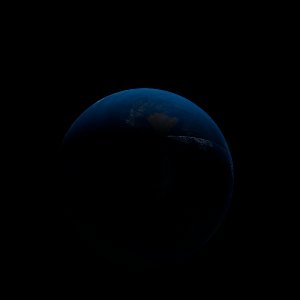|
|
Space Astro
|
Info for exoplanet "Guhi'hechu Ne"
| Scientific (actual) data |
|---|
| Planet | TOI-199 c |
| Planet status | Confirmed |
| Mass sini | 0.28 |
| Orbital period | 273.7 |
| Semi major axis | 0.8 |
| Orbit eccentricity | 0.096 |
| Discovered | 2023 |
| Updated | 2023-09-27 |
| Omega | 8 |
| K | 9.1 |
| Publication | Published in a refereed paper |
| Detection type | Radial Velocity |
| Mass detection type | Radial Velocity |
| Star name | TOI-199 |
| Right ascension | 80.1° |
| Declination | -59.9° |
| Mag v | 10.7 |
| Star distance | 101.7 |
| Star metallicity | 0.22 |
| Star mass | 0.936 |
| Star radius | 0.82 |
| Star sp type | G9V |
| Star age | 0.8 |
| Star temperature | 5255 |
| Wikipedia article | TOI-199 c |
Back
| |
| Fictional info (?) |
|---|
| Suggested name | Guhi'hechu Ne |
| Planet type | Cold planet |
| Guhi'hechu Ne has been known to astronomers since antiquity. This planet is named after the deity Guhi'hechu Ne, the creator of nature.
An observer on Guhi'hechu Ne would therefore see only one summer every five years.
Guhi'hechu Ne is a cold planet and is sometimes called Pyaanumi's "sister planet" because of their similar size, mass, proximity to TOI-199, and bulk composition. The atmospheric pressure at the planet's surface is 0.018 bar, or roughly the pressure found 1350 m under the oceans of Earth.
It was the one of the first exoplanets visited by a spacecraft, and one of the first to be successfully landed on.
The Guhi'hechu Ne system has a unique configuration among those of the planets because its axis of rotation is tilted sideways, nearly into the plane of its solar orbit. |
| Atmosphere | Nitrogen | 53% |
| Hydrogen | 41% |
| Hydrogen deuteride (HD) | 2.7% |
| 2H2O | 2.2% |
| Ammonia | 0.79% |
| Hydrogen peroxide | 0.00034% |
| Atmospheric pressure | 0.018 bar |
 |
| No known satellites |
| Google search for Guhi'hechu ne |
|
Website by Joachim Michaelis
|
|
|
|